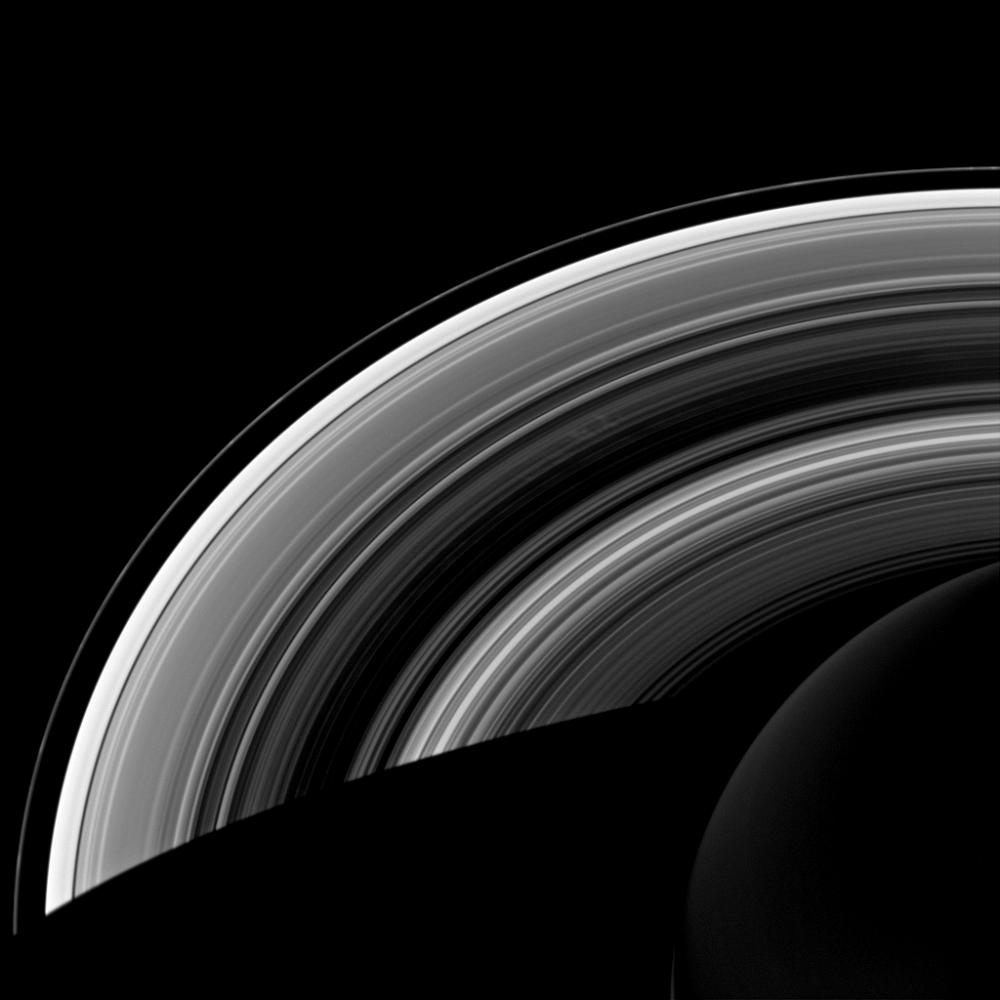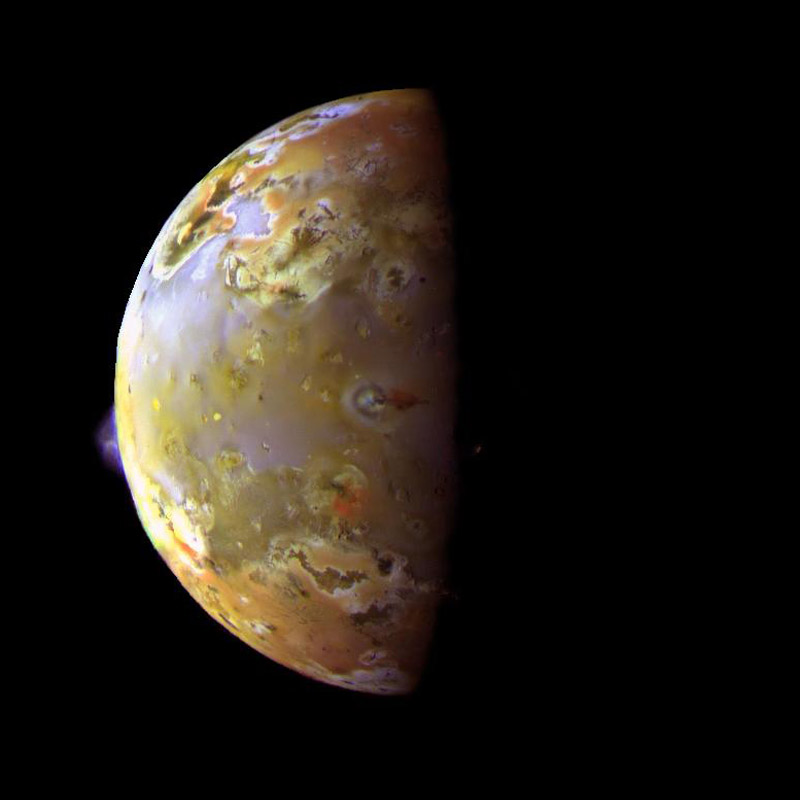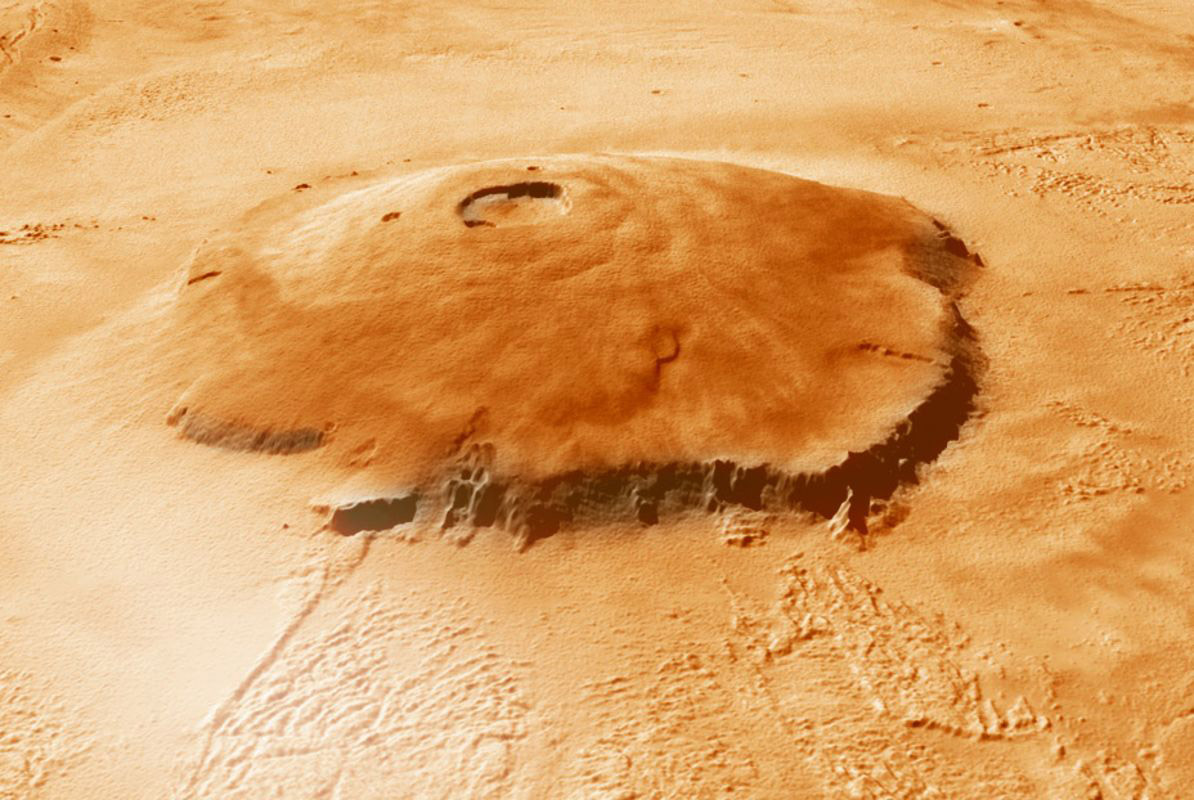
Image description: We are the first generation to see our planet from the outside and in its entirety. The first image of Earth was taken by Apollo 8 in December 1968: the first mission to carry humans beyond Earth's orbit. Image source: NASA/NOAA/GSFC/Suomi NPP/VIIRS/Norman Kuring
For several decades now, our view of the world has been enriched by many surprising images. All objects in the solar system, originating from the same cloud, have evolved together under the same constraints, driven by the same forces, obeying the same universal laws and constants.
Viewed from space, the first of the seven wonders of the world is, of course, Earth and its colors. This wonder of the world is the most beautiful because it is where life has settled, and this is evident from its colors.
Many landscapes on Earth are magnificent, such as Iguazu Falls, Niagara Falls, the Grand Canyon, Bora Bora, Annapurna, the Perito Moreno Glacier, the petrified dunes of Paria Canyon, Ha Long Bay, Cappadocia, the stone forest of Hunan, the Palawan Islands, the limestone pools of Pamukkale, but Earth is globally magnificent, alone in space. Its shades of color on deep blue make it an exceptional object, and it is these colors that reveal the presence of biochemical life. For its colors alone, I consider it the first of the seven wonders of the world.
One can easily understand the emotion felt by astronomers on the International Space Station as they orbit around it. Notice in the photo the fragile membrane of air (oxygen and nitrogen) that protects living organisms.
N.B.:
The original idea of the seven wonders of the world dates back to Herodotus (≈484 − ≈425 BC) and Callimachus of Cyrene (≈305 − ≈240 BC), who established a list that included the Lighthouse of Alexandria, the Hanging Gardens of Babylon, the Chryselephantine statue of Zeus at Olympia, the Temple of Artemis at Ephesus, the Mausoleum at Halicarnassus, the Colossus of Rhodes, and the Great Pyramid of Giza. Only the Great Pyramid of Giza has survived to this day.

Image description: The rings of Saturn maintain complex resonances with certain satellites. The 'shepherd' satellites (Atlas, Prometheus, and Pandora) roll along the edges of the rings and are essential for their stability. The overall system is very fragile, as shown in this image.
The rings of Saturn are invisible to the naked eye from Earth, but the Voyager and especially Cassini probes have sent us magnificent images of this astonishing structure. The dance of Saturn's rings is one of the most beautiful spectacles offered by the solar system.
The rings are composed of billions of small ice balls a few centimeters in diameter, each in its own orbit, all confined to a gigantic, extremely thin disk. Despite the faint light of the Sun, this disk appears and disappears in Saturn's shadow like a sharp blade emerging from its sheath.
Small, mysterious icy moons—Atlas, Prometheus, Pandora, Mimas, and Pan—a few tens of kilometers in diameter, roll across this ice carpet without drawing attention to themselves. All this ice gathered into a single object would form only a small moon 150 km in diameter. These rings could be an ancient moon that exploded under Saturn's tidal forces or was disintegrated by the impact of a comet.
The ring zone begins very close to Saturn, at about 70,000 km, and the distinct bands of different colors stretch into space over a distance of 500,000 km. For comparison, our Moon is about 385,000 km from Earth, and Saturn's diameter is about 120,500 km.
The divisions between the rings are enigmatic because the intervals between the rings contain more dust than ice. This structure of matter can only exist near Saturn because the forces of attraction on the small rocky particles nearby prevent the particles from accreting, maintaining a ring structure.
Beyond a certain limit, called the Roche limit, collisions cause particles to accrete and form a satellite. Apart from their beauty, the origin of the rings remains one of the most challenging problems facing astronomers. Especially since it is not a unique phenomenon; the planets Jupiter, Uranus, and Neptune also possess comparable ring systems, sculpted by gravity and composed of aggregates of ice particles that constantly assemble and disperse.

Image source: Voyager 1 (1979) and Galileo missions (1995) NASA.
Io is the closest moon to Jupiter and orbits it in 40 hours. It is the fourth-largest moon in the Solar System, slightly larger than our Moon.
Io is primarily composed of rock, not ice like the other moons. Io is unique in its beauty, presenting an incredibly active surface that is so young it lacks impact craters. With over 400 active volcanoes, it is the most active object in the Solar System. This geological activity is due to its proximity to the giant planet, which constantly deforms its crust and mantle, made flexible and hot by tidal forces and its orbital resonance with its neighbors, Europa and Ganymede.
The volcanoes eject enormous volumes of silicate lava and project sulfur and sulfur dioxide to incredible heights, up to 500 km. All its plains are covered with these substances, giving it beautiful warm colors—red, yellow, white, black, and green—changing Io's appearance within a few months.
Its intense activity has sculpted a magnificent landscape composed of a hundred mountains, some taller than Everest. In the multicolored plains, one can see flows of sodium- and magnesium-rich lava, numerous yellow and red lakes of molten sulfur, and white and green calderas several kilometers deep.
Io also has a thin atmosphere produced by gas rising to the surface and erupting. This gas consists mainly of sulfur dioxide (SO2). Io's very low gravity cannot retain a dense atmosphere; however, at the equator, where the volcanoes are concentrated, the atmosphere is thicker. In these hot regions, reddish auroras have been observed from Earth. The hottest regions, where there are lava flows, reach temperatures of 1700 °C, with an average temperature of 27 °C in these regions. However, the average temperature of the moon is icy, around -143 °C.

Image description: Despite its small size of 500 kilometers in diameter, Enceladus, Saturn's moon, has intense geological activity.
Enceladus, despite its small diameter (500 km), has surprising characteristics: Enceladus is alive.
Viewed from its surface, Saturn is immense, 60 times larger than the Moon in our sky, while the Sun is 10 times smaller. It is this proximity to Saturn that brings it a little warmth through tidal effects.
Enceladus is covered with a layer of "recent" snow with bluish reflections, about a hundred meters thick. Enceladus also has geological activity that is difficult to explain for such a small body. Under its surface lies a gigantic ocean of liquid water 150 km deep.
Its surface exhibits tectonic fractures, rifts like large, more or less parallel grooves 200 km long, 10 km wide, and 1 km deep. From these narrow fractures, ice plumes spray its orbit.
Geysers constantly explode in all directions, ejecting ice particles up to 500 km high, which then fall back to the surface. These salty ice geysers also spread a thin, swirling trail in the moon's wake. This trail feeds Saturn's outermost and most extensive ring and the solar system.
N.B.:
A geyser ejects water at high temperature and pressure. Geyser activity is linked to the presence of deep water. The water is heated by contact with hot rock. This pressurized water then erupts to the surface through convection. The surface orifice is usually narrow, connected to fine conduits leading to vast underground water reservoirs. The largest active geyser on Earth, the Steamboat Geyser in Yellowstone National Park, USA, measures just over a hundred meters.

Image description: Olympus Mons is the largest volcano in the solar system, towering over a vast plateau 22.5 km high.
Olympus Mons is an exceptional shield volcano on the planet Mars. This magnificent yellow volcano, 648 km wide, rises to an impressive height of 21,229 meters above the Martian reference level. Relative to the surrounding plains, the giant rises to 22.5 km, piercing Mars' red sky.
Olympus Mons is bordered by gigantic white cliffs, reminiscent of this immense uplift. This cliff, which extends around the entire circumference, reaches 6 km in height in places.
Its caldera measures 85 km long, 60 km wide, and 3 km deep, a enormous hole in which one can still admire six other smaller, intertwined collapse craters.
The exceptional size of Olympus Mons is likely due to the fact that Mars does not have plate tectonics, and it seems that all the lava from the depths has accumulated in the same place over billions of years, reaching an incredible height beyond the ceiling of commercial airliners.
Olympus Mons is the largest volcano in the solar system. If placed on France, it would cover an area from Paris to Montpellier and from Bordeaux to the Swiss border.
N.B.:
A shield volcano is the result of the accumulation of very fluid lava emitted by volcanic vents over a very long period.

Image description: Triton is a large satellite with a diameter of 2,706 km, but its orbit is retrograde, meaning its direction of rotation is opposite to that of Neptune's rotation. This characteristic reveals that Triton is an object from the outer solar system captured by the giant planet. Triton is also notable for its geological activity and seasons. Each season on Triton lasts an average of 41 years.
Triton (2700 km in diameter) is the largest moon of Neptune and the seventh-largest moon in the solar system; our Moon is the fifth-largest with a diameter of 3470 km.
Triton has a unique characteristic: it is the only large moon in the solar system that orbits in the opposite direction to its planet's rotation. Therefore, Triton could not have formed around Neptune, and its composition suggests an object from the outer solar system, like Pluto.
Its retrograde orbit is all the more surprising because Triton is very close to its planet, at approximately 355,000 km, and orbits Neptune in 5 days and 21 hours on a perfectly circular orbit.
Triton is also notable for its significant and relatively recent geological activity. This activity explains why its surface lacks significant relief and has few impact craters.
Triton experiences very pronounced seasons because its orbital plane is inclined relative to Neptune's orbital plane around the Sun. Each season on Triton lasts an average of 41 years. The icy southern hemisphere of Triton, visible in the photo, was observed by the Voyager 2 probe in 1989, during spring. The southern hemisphere entered summer in 2000 and will be sunlit for 40 years.
Triton receives very little heat, and its surface temperature is extremely cold (-235 °C). The action of the Sun on the southern polar cap will sublimate the frozen nitrogen and generate a slight surface breeze.
In Triton's tenuous atmosphere, one can see thin nitrogen clouds in the sky. Its surface displays beautiful pastel hues. The southern hemisphere is a highly reflective region tinted pink and yellow, marked by small dark streaks likely caused by geysers of sublimated nitrogen beneath the surface, erupting under pressure and carrying dark dust particles. Above, one can see another smoother region with "cantaloupe terrain" reflecting a gray-green hue dotted with dark spots surrounded by white halos.
The darkest region is the trailing hemisphere of the satellite, sheltered from meteorite impacts. This region has a grayish-blue tint, perhaps reflections from Neptune. In this region, the craters appear to belong to cryovolcanoes, which, instead of lava, eject volatile elements such as water, ammonia, or methane.

Image description: Color photograph taken between 1996 and 1997 by the Galileo probe at a distance of 671,880 km. Europa's fissures constantly open and close with the tides, revealing plumes of water vapor. The brown-red color represents the non-icy areas of the crust, painted by minerals transported and distributed by the released water vapor. Blue represents the icy areas. White describes areas covered by ice particles ejected during the formation of visible craters in the region. Image source: NASA Galileo mission (1989 − 2003).
Europa is a moon of Jupiter and the sixth-largest moon in the solar system, just after our Moon. Its surface is smooth and shiny, and Europa's beauty comes from its enigmatic, fractured surface.
Europa may have a gigantic ocean of salty water, kept liquid, hidden beneath several kilometers of frozen surface. The fractures in its ice crust show the friction generated by Jupiter's enormous tidal forces. In some places, fissures allow 'subterranean' water to rise. These fissures constantly open and close, hiding a 'warm' interior. Additionally, its atmosphere contains some oxygen, and Europa's surface appears to harbor organic elements. The ice crust is torn by long, wide dark bands showing surface deformation. This surface takes on the appearance of a vast network of intertwined fractures, dusted with hydrated sulfates of magnesium and sodium and possibly sulfuric acid. These traces reveal the presence of a subterranean ocean. Like Earth, Europa consists of an iron core, a rocky mantle, and an ocean of salty water beneath its icy crust.
So far from the Sun, an ocean would be completely frozen. But Europa orbits Jupiter in 3.5 days, and the moon is tidally locked, always showing the same face to Jupiter. Its proximity to the giant Jupiter creates tides that stretch and relax its surface. The tides provide energy to the moon's icy shell, creating the linear fractures visible across its surface.
If Europa's ocean exists, the tides could also create volcanic or hydrothermal activity on the seafloor, bringing nutrients.
In 2013, the Hubble Space Telescope observed plumes of water in space, generating considerable excitement among scientists, as it proves that the moon is still geologically active. These plumes of liquid water will be studied by future missions to Europa, particularly the NASA mission starting in 2020, which is already fascinating the scientific world.